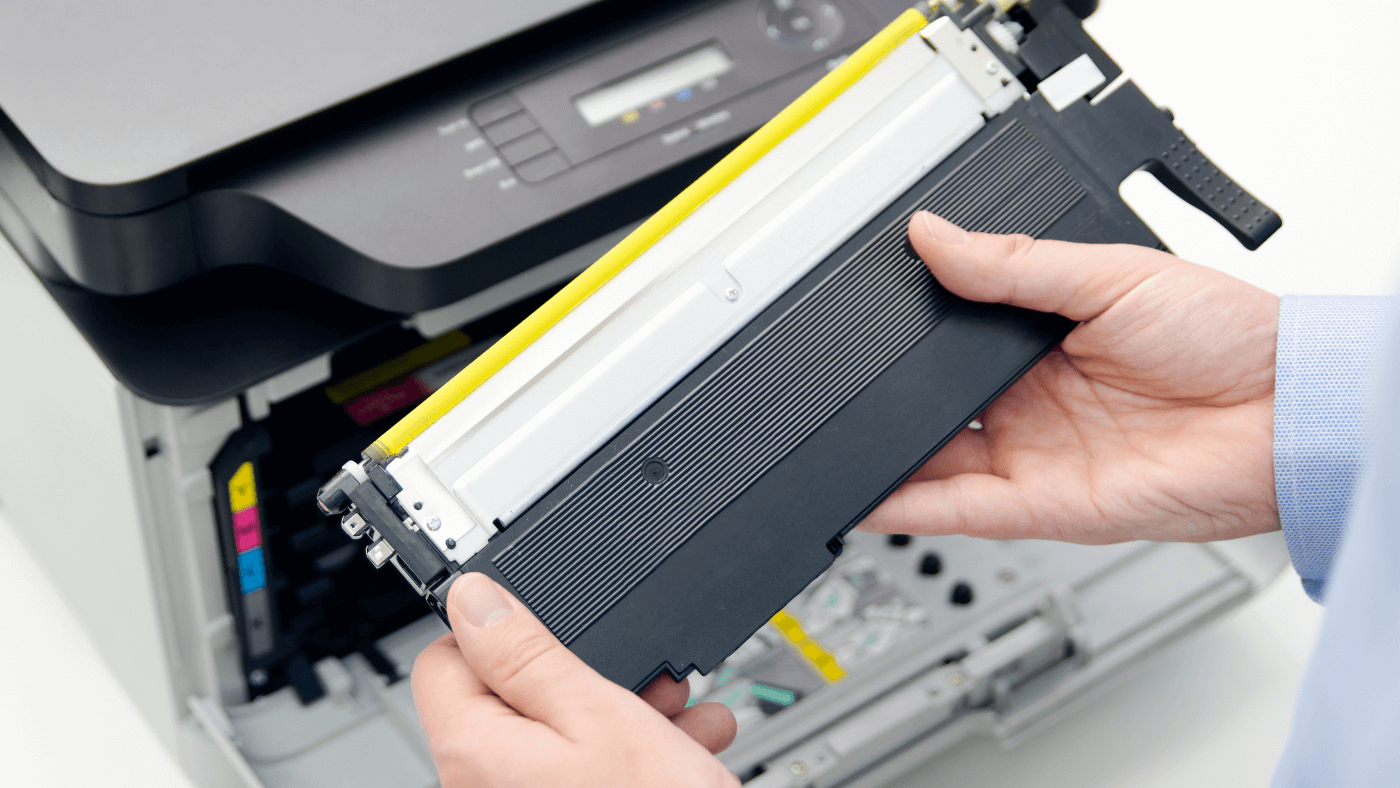It's an all-too-familiar scenario that leaves many users scratching their heads: you've bought a new ink or toner cartridge, carefully unpacked it, inserted it into your printer, and then the unexpected happens - the printer doesn't recognize the cartridge. This situation not only leads to frustration and wasted time, but can also significantly disrupt workflow, especially in environments that rely on smooth printing operations.
The reasons why a printer won't recognize a cartridge are varied, ranging from simple issues like protective tape not being removed to more complex issues like firmware incompatibilities. Whatever the cause, it is crucial to find a solution to restore productivity and ensure your investment in print materials does not go to waste.
In the following sections, we will look at a systematic approach to identify and fix the most common causes of the problem. From checking compatibility and removing protective materials to technical solutions like firmware updates and resetting the printer, our goal is to give you practical advice to get your printer back up and running quickly .
Check basics for printer cartridges
Before diving deeper into the technical solutions to fix the printer not recognizing cartridge issue, it is essential to review some basics. These first steps are often crucial and can solve many common problems quickly and efficiently.
Ensure cartridge compatibility
One of the most common reasons why a printer does not recognize a newly installed cartridge is due to compatibility issues. Not every cartridge fits every printer model, and using incompatible cartridges may result in detection errors. To avoid this problem you should:
- Check before purchasing: Make sure the cartridge is specifically designed for your printer model. This information can be found on the cartridge packaging or on the manufacturer's website.
- Pay attention to model numbers: Printer and cartridge models have specific numbers. Compare these numbers carefully to make sure they match.
- Follow manufacturer recommendations: Preferably use cartridges that are recommended by the manufacturer of your printer. Although compatible third-party cartridges can provide a cost-effective alternative, using original cartridges is often the safest way to avoid compatibility issues.
Remove protective strips and seals from new printer cartridges
Another fundamental cause that is often overlooked is the presence of protective strips or seals on new cartridges. These security features are intended to protect the cartridge during transport, but if not removed, may result in the printer not recognizing the cartridge. To address this issue:
- Inspect the cartridge: Before inserting a new cartridge, carefully inspect it for any protective materials. Look for an adhesive strip, plastic tab, or seal covering the nozzles or contacts.
- Remove protective materials carefully: Carefully peel off any protective strips or seals found. Make sure you do not damage the cartridge or contacts.
- Clean the cartridge if necessary: If residue remains on the contacts when removing the protective materials, clean them carefully with a soft, lint-free cloth.
By reviewing these basics, you can easily and quickly resolve many common problems that cause a printer not to recognize a cartridge. This step is essential before considering further, more complex troubleshooting actions.
Troubleshooting unrecognized printer cartridges
If your printer doesn't recognize the cartridge installed after you've checked the basics, it's time for some targeted troubleshooting. Two common causes of detection problems are dirty contacts and an incorrectly installed cartridge. By carefully addressing these issues, you can often achieve a quick resolution.
Clean contacts for better identification of the printer cartridge
One of the main reasons why a printer does not recognize a cartridge is dirty or contaminated contacts on both the cartridge itself and the printer. To fix this issue:
- Disconnect Power: Before you begin, make sure the printer is turned off and unplugged to avoid electrical damage or injury.
- Get access to the contacts: Open your printer's cartridge access and remove the affected cartridge to access the contacts.
- Prepare cleaning materials: Use a soft, lint-free cloth and isopropyl alcohol or special contact cleaner. Avoid using water as it may cause corrosion.
- Clean contacts gently: Gently wipe the contacts on the cartridge and in the printer to remove ink, dust, or other contaminants. Be particularly careful not to cause damage.
- Allow to dry: Allow the cleaned contacts to dry completely before reinserting the cartridge and turning on the printer.
Ensure correct insertion of the printer cartridge
Another common cause of detection problems is that the cartridge is not installed correctly in the printer. This can often be resolved with a simple check and adjustment:
- Check instructions: Consult your printer's instruction manual to make sure you are installing the cartridge according to the manufacturer's instructions.
- Check cartridge: Make sure the cartridge is clean and no protective materials are stuck to it.
- Insert correctly: Carefully insert the cartridge into the slot provided. Make sure it is secure and aligned correctly.
- Wait for confirmation: Close the cartridge access and turn on the printer. Wait for the printer to recognize the cartridge, indicated by an on-screen confirmation or no error messages.
By carefully cleaning the contacts and correctly inserting the cartridge, you can effectively eliminate many problems that cause detection difficulties. These steps are an essential part of troubleshooting and will help quickly restore functionality to your printer.
Technical solutions to printer problems
If basic checks and initial troubleshooting don't work, it's time to move on to more technical solutions. A firmware update or printer reset can solve common problems, including the difficulty of the printer not recognizing a cartridge. These actions should be carried out with care and according to the manufacturer's recommendations.
Perform printer firmware update
A printer's firmware is essentially the operating system that controls how the printer works. Manufacturers regularly release updates to improve performance, add new features, or fix known issues. A firmware update can solve cartridge compatibility issues in particular:
- Follow manufacturer's instructions: Visit the printer manufacturer's website to find instructions specific to your model. The latest firmware updates should also be available there.
- Carry out the update carefully: Follow the instructions carefully. This can include downloading a file and running it on your computer while the printer is connected via USB, or running the update directly from the printer menu if your device has an Internet connection.
- Be careful with non-genuine cartridges: Note that some firmware updates may restrict the use of third-party cartridges. Find out in advance whether the update affects compatibility with non-original cartridges.
Reset the printer to solve the problem
A factory reset can solve a variety of problems by returning the printer to the state it was in when it was first used. This can be particularly useful if error messages persist or the printer still does not recognize the cartridge after trying other solutions:
- Perform a reset: The exact method for resetting a printer varies depending on the model. In many cases, you'll find the reset option in the printer's Settings or Tools menu.
- All settings will be lost: Please note that resetting will cause all previously made settings to be lost. You may need to reconfigure network settings and set up personal preferences again.
- After the reset: After a successful reset, reinstall the cartridge and see if the printer now recognizes it.
These technical solutions can be effective in solving stubborn problems with your printer. However, it is important to carry out them carefully and, if in doubt, seek professional help or support from the manufacturer to minimize the risk of malfunction or damage.
Conclusion
The problem of a printer not recognizing a newly inserted cartridge can pose challenges for users and significantly disrupt printing operations. However, as we have seen, there are a number of approaches, ranging from checking basic aspects to more technical measures, to effectively address such problems.
First, it is important to ensure the compatibility of the cartridge with the printer and check that all protective materials have been removed. These simple steps can often be the solution. If the problem persists, thoroughly cleaning the contacts on the cartridge and printer and inserting the cartridge correctly may help.
If these measures are not successful, more technical solutions such as firmware updates and resetting the printer offer further options for restoring functionality. Although these steps require a little more effort and caution, they can be very effective, especially for stubborn problems.
It is critical that users approach troubleshooting systematically and carefully examine each potential cause. If you are unsure or have more complex problems, it is advisable to contact the printer manufacturer's customer service or professional repair services for appropriate assistance.
In summary, the ability to solve common printer cartridge problems yourself can not only save time and money, but also provide a deeper understanding of how your printer works. With the right knowledge and a little patience, most problems can be successfully resolved and your printer will be up and running again quickly.



